Connecticut offers residents and businesses clean energy incentives to install solar panels and invest in clean energy vehicles.
In combination with federal tax credits for green energy, the cost of any new equipment installed can qualify.**
TAX INCENTIVE NOTICE*
**Fraud Alert**
US Green Energy
Click Here to Sign Up for Free Solar Panel Installation
| Schedule | Acceptance Date | Last Day To Register |
|---|---|---|
| Q1 | Monday January 1, 2024 | March 30, 2024 |
| Q2 | Monday April 1, 2024 | June 30, 2024 |
| Q3 | Monday July 1, 2024 | September 30, 2024 |
| Q4 | Tuesday October 1, 2024 | December 30, 2024 |
| Q1 (2025) | Wednesday January 1, 2025 | March 30, 2025 |
Connecticut’s Renewable Energy Development Initiatives
Clean Energy Programs
Connecticut Residential Solar Incentives
PLEASE NOTE: Beginning in 2025, the federal tax incentives for solar residential installation will be impacted. See the table below for the dates and amounts currently legislated.
**The Federal tax credit is available every year that new equipment is installed.
Conecticut State Capitol
210 Capitol Ave,
Hartford, CT 06106, USA
(860) 240-0100
Hours: M-F 9:00am-5:00pm
Eversource
107 Selden Street
Berlin, CT 06037
(800) 286-2000
Hours: M-F 8:00am-6:00pm
Energy Division
Connecticut Department of Energy & Environmental Protection
79 Elm Street
Hartford CT 06106-5127
(860) 424-3000
Hours: M-F 8:30am-4:30pm
National Weather Service
1325 East West Highway
Silver Spring, MD 20910
Main: (828) 271-4800
Fax: (828) 271-4876
TTY: (828) 271-4010
Email: [email protected]
Hours: Open Daily, 24 hours
Clean Energy and Vehicle Federal Tax Credits
Business Federal Tax Credits
State Tax Credit and Rebate Schedule
| Year | Credit Percentage | Availability |
|---|---|---|
| 2024-2032 | 30% | Individuals who install equipment during the tax year |
| 2033 | 26% | Individuals who install equipment during the tax year |
| 2034 | 22% | Individuals who install equipment during the tax year |
| Sales and Use Tax Exemption | 6.35% | Single-use tax exemption for solar energy systems |
| Property Tax Exemption | Varies | For solar panels and other renewable energy systems |
If you have determined that you are eligible for the green energy credit, complete Form 5695 and attach to your federal tax return (Form 1040 or Form 1040NR).
IRS Form 5695
Instructions
Future Due Dates and Basics
Office of Energy Efficiency & Renewable Energy
Forrestal Building
1000 Independence Avenue, SW
Washington, DC 20585
RESIDENTIAL CLEAN ENERGY TAX CREDIT
Connecticut Clean Energy
Shared Clean Energy Facility
Electric Vehicle Charging Program
Residential Renewable Energy Solutions
Non-Residential Renewable Energy Solutions
Innovative Energy Solutions
Power Outage Map
Connecticut Department of Energy & Environmental Protection
Phone: (860) 424-3000
Email: [email protected]
Monday – Friday
8:30 AM – 4:30 PM
79 Elm Street
Hartford CT 06106-5127
Understanding Connecticut Solar Incentives and Options
Did you know that the electricity rates in Connecticut, as of June 2023, are around 95% higher than that of the national average?12
Home solar systems can provide electricity for a fraction of that amount, even with the high upfront costs. In fact, solar panels for homes are cheaper than ever, and thanks to incentives offered by the state and federal government, residents can slash to costs and claim their solar panels through open enrollment registration right away.
This complete guide explains how residents can use Connecticut solar incentives to dramatically reduce their energy costs.
There is a lot to celebrate in terms of solar power in Connecticut. For starters, according to solar energy facts in Connecticut, a typical home in the state will be able to save as much as $1,100 of their utility bills, just for making the switch to renewable energy.13
You should also know that over the years, the cost of solar panels in Connecticut has been plummeting, and the panels are now cheaper than ever.
Thanks to the solar farms in Connecticut, like the Fusion Center (Baltic), Quinebaug Solar (Canterbury), and so many more in the region, the solar power adoption rate has grown to as many as 19,000 household installations.14
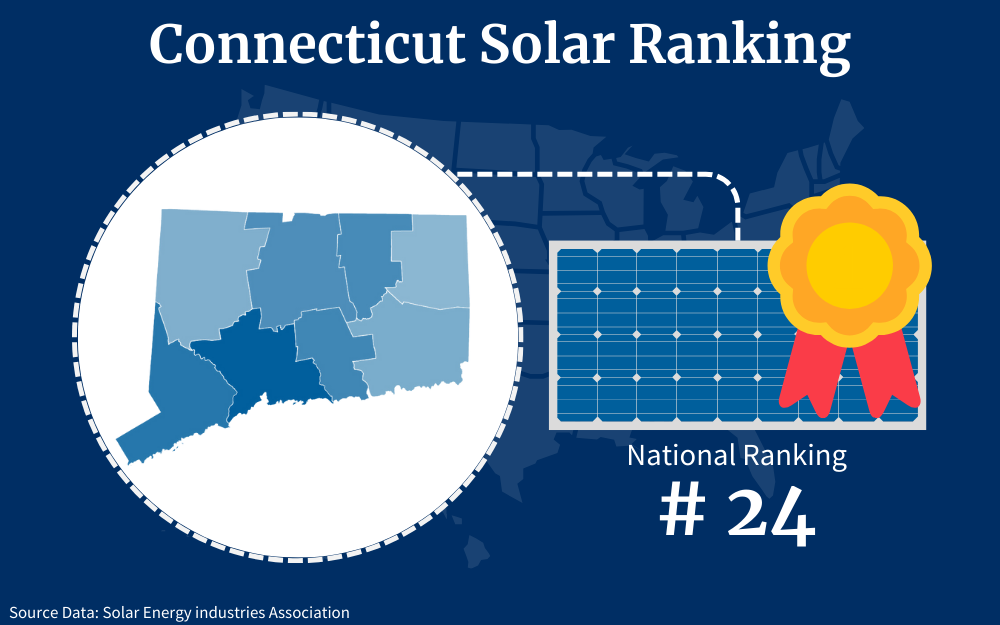
This is why the state ranks at number 24 when it comes to solar installation rates.14 It is not even the best performing in terms of solar incentives by state and that means that it has the potential to rank way higher than it already is.
Now, onto the main reason why solar power in Connecticut is doing well:
- Solar tax credit
- Federal solar tax credit (ITC)
You must have heard about it at some point but want to learn more and make the connection as to why it is one of the reasons for the faster solar power adoption rates in the region.
So, what exactly is the federal solar tax credit?
The 30% tax credit has been a great force in the solar power market since the year 2006. It has a pretty simple way of working; look at it this way, if you spend $1,000 on your solar panel installation, you can actually claim $300 from the government in the form of a tax break or credit,2 that is a 30% incentive.
In simpler terms, if you have received $300 in terms of credits, you will actually owe $300 less in taxes. This is not just available in Connecticut, but also in the other states in the country and has been one of the reasons why many homeowners find it the best way to go.
When it was implemented in 2005, the rate stood at about 26% and was only limited to solar power installations. However, comes the Inflation Reduction Act in the year 2022.6
The rate bumped up to 30%, and it is going to be in effect up until 2032, after which the rate will keep decreasing to 26% in the year 2033, to 22% in the year 2034, after which it will completely end in 2035.
So, you may wonder, what are the individual limits on the federal solar tax credit? Simple, 30% of the cost, redeemable in the form of a tax break or credit.
Requirements for Obtaining Solar Credit in Connecticut (ITC Tax Credit)
There is absolutely no doubt that the solar tax credit is one of the most lucrative Connecticut solar incentives, because, to be honest, there is virtually no other program that is going to offer you that much just for solar energy installation. So, you definitely don’t want to miss out on this, no matter what.
Unfortunately, many end up losing out because they don’t follow the rules. There is a requirement list that you have to follow to check that you are eligible.
Even before learning the application process, it is important to understand the eligibility criteria first and foremost.
1. The System Must Be in Your Ownership
This is one of the top rules when it comes to the ITC, that you must be the owner of the system, and must have paid for it in full, whether in cash or loan, just as long as it is in your name. Therefore, systems installed on solar leases automatically do not qualify.
2. The System Should Be in the United States
Even if you are a US citizen setting up the panels in a different country, the installation has got to be on US soil, in your primary or secondary home, or a community solar project.
3. You Must Have a Tax Liability
The ITC is not really a cashback or a refund, the credits you receive go to reducing the amount of taxes that you owe, and what that means is that you should have a tax liability in the first place. Therefore, if you still don’t have an income or are retired, then the tax credit will not be for you.
4. You Must Have Completed the Solar Panel Installation in Connecticut
Not many are aware of this, but the federal solar tax credit only works when you are done with the entire installation process. That is why you will have to either fund it all yourself or find alternative options like solar loans, just as long as the panels will end up being in your possession, so you want to avoid PPAs and solar leases if you want the ITC.
When you are certain that you have met all the requirements above, it is time to start the application process. This is also something that you want to be very keen on because you should know the solar tax credit forms in Connecticut that you are supposed to fill out and how to fill them.
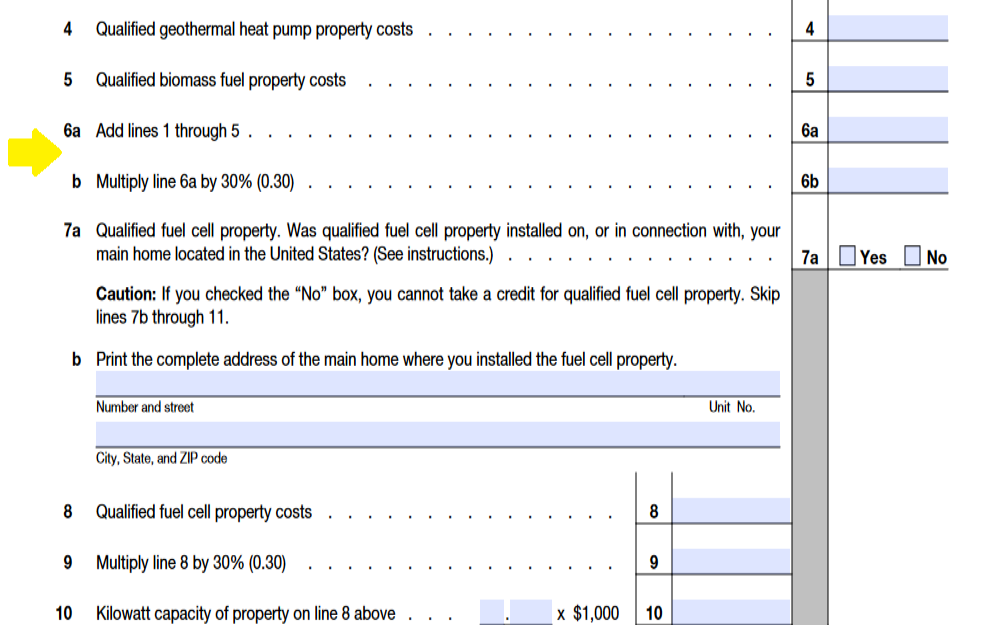
This is basically how to apply for the federal solar tax credit in Connecticut in a few simple steps.
Step 1: Download the IRS Form 5695
So, what forms do I need for solar tax credit? You are going to claim the tax credit when you are filing your taxes, and you will start from the IRS official website, downloading the IRS Form 5695,11 which is literally the only way that you will get the IRS to review the application.5
Step 2: Fill Out the Documentation
You will have to keenly follow the Form 5695 instructions on the document when filling it out.15 For example, lines 6a and 6b will ask you how much the installation really cost you and help you calculate how much your credit is supposed to be.
Remember that you don’t really have to fill it out on your own; you can always ask your accountant for help, and if you don’t have some details, the installation company will be of service.
Step 3: Add the Details to Form 1040
Basically, the details that you have filled in Form 5695 line 15 will later go to the IRS Form 1040 as the total amount of credit that you should get.16
Additional Incentives for Connecticut Home Solar Systems
If you are looking for ways to reduce the total cost of your PV panels, you might want to look into other available Connecticut government solar incentives like the Connecticut solar property tax exemption.
Imagine using them alongside the federal solar tax credit; that will mean more money saved on your installation.
So it is a great thing that there are quite a number of local programs and Connecticut energy rebates that are being offered by various municipalities and utility companies to make solar more accessible.
Energy Conservation Loan
Another incentive that comes from Energize Connecticut is this solar financing program, which is used for literally any energy-efficient upgrade that you make for your home.
It may be a water heater or an HVAC equipment; no matter what it is, the program makes sure that the residents at least have financing options.
Home Energy Solutions
There is one more program that now pays more attention to low-income families, ensuring that the switch to renewable energy is more attainable. Home energy solutions include hefty rebates for things like:
- Air and ground heat pumps (Up to $15,000)
- Gas furnace and boiler replacements ($650-$750)
- Insulation (Up to $1.70 per square foot)
- Appliances ($50)
It helps that this program is not just for solar installations but just about any energy-efficient system as long as it means the use of less energy and reducing over-reliance on fossil fuels.
Moreover, you can schedule an inspection of your home for free, simply fill out the application and qualification forms online.17
Smart-E Loans
Thanks to this solar stimulus program, Connecticut residents are able to enjoy affordable solar loan facilities.
This is a thoughtful incentive from the Connecticut Green Bank partnering with Energize Connecticut, allowing more homeowners to gain access to low-interest rate loans, reducing the upfront cost of solar panels in CT.3
Selling Solar Power to Connecticut: Net Metering Process Explained
There are so many advantages to owning a solar PV system, and one of them is being able to sell your excess power to utility companies in Connecticut. The Connecticut Public Utilities Regulatory Authority allows homeowners with installed panels to earn in two ways: either the Buy-all Tariff that is kind of like a PPA and the Netting Tariff over the course of 12 months.
Note that the net metering in Connecticut is now more formally known as Residential Renewable Energy Solutions.9
You simply have to ask your installer to link you to the grid, so you don’t really have to do most of the work yourself.
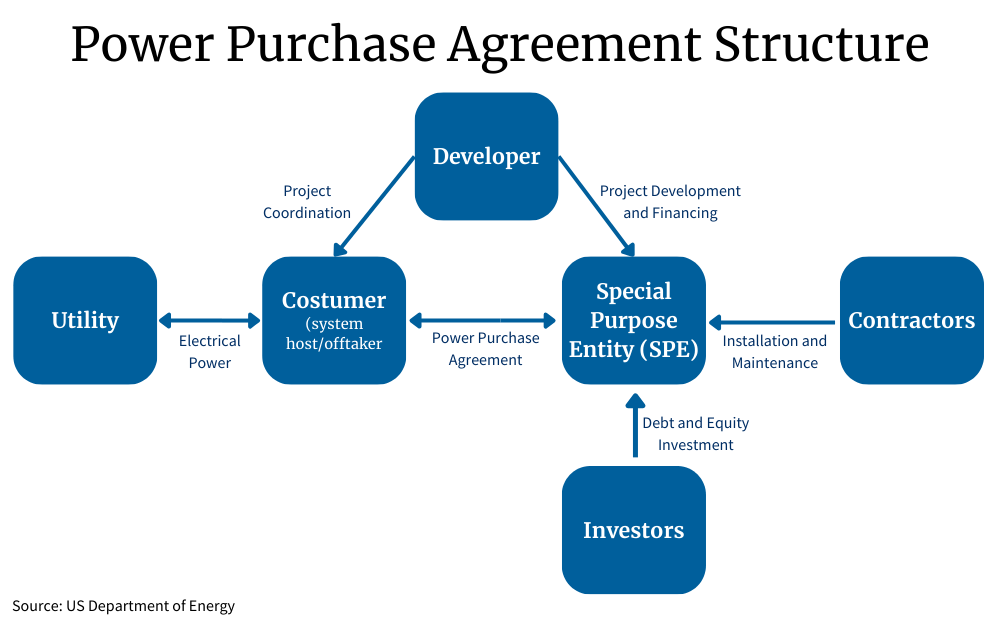
Did you know that, conversely, other solar power companies can sell the power to you? It is called a solar lease or a Power Purchase Agreement, which some deem as free solar panels in Connecticut.
So, here is what happens: you enter a contract, allowing the company to install their panels for little or no cost to you and in exchange, you have to pay a certain amount at the end of the month.
It will either be a specific rate or vary according to your solar bill or just how much you have used over the course of the month. The upside to this method is that you don’t have to worry about the upfront cost of installing solar panels, but on the other hand, the panels remain in the company’s possession, meaning that you cannot make use of the CT solar tax credit.
One common question is, what happens if I stop paying my solar lease? Being that the installer is the owner of the panels, they could take back their system if you fail to pay the solar lease.
How To Choose Solar Panels in CT
Solar energy panels are some of the most expensive pieces of equipment that you could install in your home. And that is why you have got to be very careful with whom you choose to have them installed.
Currently, CT has a total of 60 solar plants, providing green energy to the state.
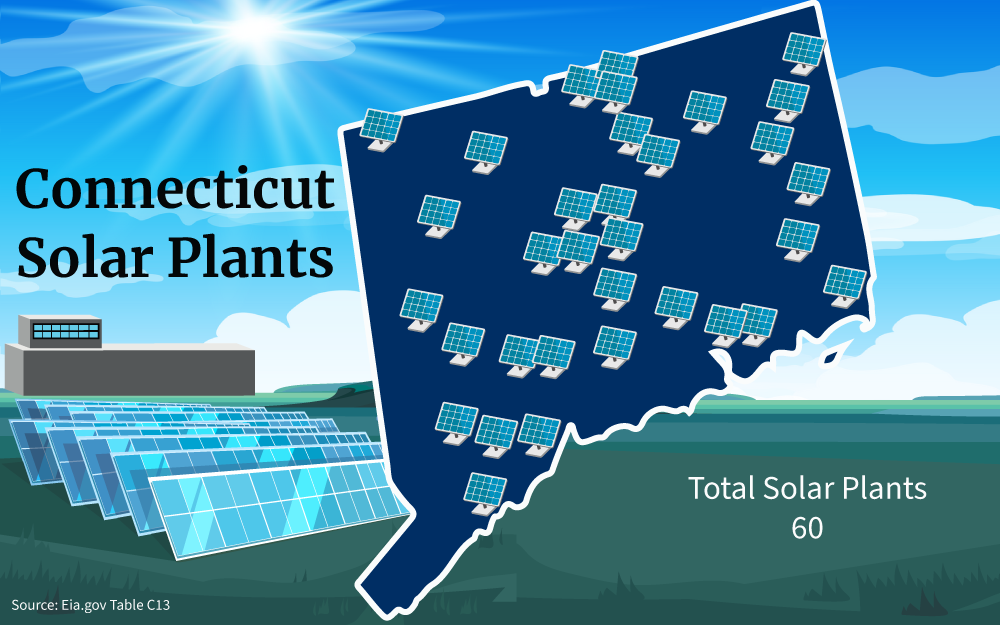
With home solar installation, the last thing you want is a shoddy job when it comes to the selection of the solar cell panel and the overall project.
This is why you need some tips, whether you are going for brand new, used, or surplus solar panels.
Make Sure That the Installer Also Offers Other Services
It would be a lot more hectic to keep outsourcing services from various companies and you would rather settle for a single installer that will get all the tasks done. You can ask if they can also handle battery installation and other related services.
What Are Their Product Warranties?
Your best bet is a company whose products have 25-plus-year warranties, at least that way, you will be sure that you are getting the most durable and reliable products installed. You can also additionally check whether they have power performance warranties.1
What Are Their Payment Options?
There are some companies that have special incentives for their customers and others recommend solar financing. You will also meet others who pay a lot more attention to PPAs for those who have trouble financing the entire project.10
Home Solar Installation Expenses and Materials
The solar system is quite an elaborate one, and that may be one of the reasons why installation could cost you much. If you are a first-timer, buying and using solar panels for the very first time, you would want to know some basics first, starting with what is solar PV, the other solar system installation requirements, and finally, how much do solar panels cost.
For starters, take a look at what you will need for the project.
Basically, there are four key pieces of equipment that you will need for your solar panel Connecticut installation, without which the project will not run. They are:
- Solar panels
- Charge Controller
- Power Inverter
- Battery (optional)
Let’s look at the components in more detail and discuss their functions and roles in the solar panel system.
Of course, you will have to buy solar panels, which contain photovoltaic cells that harness the sun’s rays and convert them to electricity.7
That explains why they are some of the most expensive parts of the entire system. The other main component is the charge controller.
The power from the sun can be too strong, sometimes too strong, that it could potentially damage other parts, and that is why you need a control mechanism that will help regulate the amount of power that comes into the system. In addition to that, a power inverter will also come in handy to help transform the DC to AC that the household can use.
And, lastly, you will also need a battery so that you will still have power even when the sun is not shining on the panels.
Connecticut averages around 4 hours of sunlight per day.

Now that you know what you need for your solar installation, you should also know how much it will cost to go solar in Connecticut. The average cost for installing solar panels if you live in Connecticut is about $19,600, which is for a typical 7 kW system installation.4
Given that this is only an average, note that there are pretty high chances that you may end up spending less for the installation if you take some factors into consideration.
The size really matters a lot when determining how much solar panels will cost you. You will have to spend way more if you have higher energy needs and have a massive house that only a bigger system will suffice.
And that is why commercial setups are usually more expensive than those for residential settings.
Apart from that, remember that there are also solar incentives in Connecticut that will gladly step in to help reduce the cost. Take, for instance, the federal solar tax credit; if you apply for it against the $19,600 total cost, you will actually save more than $5,500, which makes it a pretty great deal.
Solar Power Home Calculator: How Many Panels Do I Need?
Before you connect solar in your home or business, there must be a lot of questions running through your mind.
Some of them may include:
- How many home solar panels do I need?
- How much photovoltaic energy will come from the system?
- Will it be enough to fulfill your power needs?
And so many other questions that a first-timer would need to know.
This is why you will be able to find a solar output calculator online that will guide you through it all. If you don’t know how many panels you will need, the system will take the energy needs and divide them by the wattage of a single panel and the result will be how many panels will be needed to produce that much power for your house
As for the energy needs, it will be pretty simple because you can always confirm from your previous monthly bills; the average will be how much power will be enough to fully run your home.
When it comes to the amount of savings that you will make over the course of the life of solar panels, it is also simple to calculate. You will just take the average monthly bills in accordance with how long solar panels last, which is about 25 years (20-30 years),8 and note down how much money you will spend on utility bills for the entire time.
You will then subtract the cost of your panels from that figure, and the result will basically be your savings.
Why Choose Solar in Connecticut
Is solar worth it in CT? A question you may ask before taking the leap and converting to solar power for good.
Residential solar in Connecticut is something to brag about, and any homeowner will tell you that they do not regret switching one bit. There are so many benefits that come with going solar in the state, or any other region for that matter.
For one, imagine no more hefty electricity bills from the traditional grid system. You will actually end up saving a lot of money over the long life of your panels, and being off-grid means that you are immune to blackouts.
It’s not just that. Did you know that installing solar panels in Connecticut automatically increases your home’s value?
By how much does solar increase home value? It depends on factors like your location, but generally, the value could bump up even by 4%.
There is also the environmental impact of solar energy, and you will realize that it is way better than power from fossil fuels. It doesn’t cause as much emissions, which makes it a cleaner alternative for the resident who is eco-conscious.
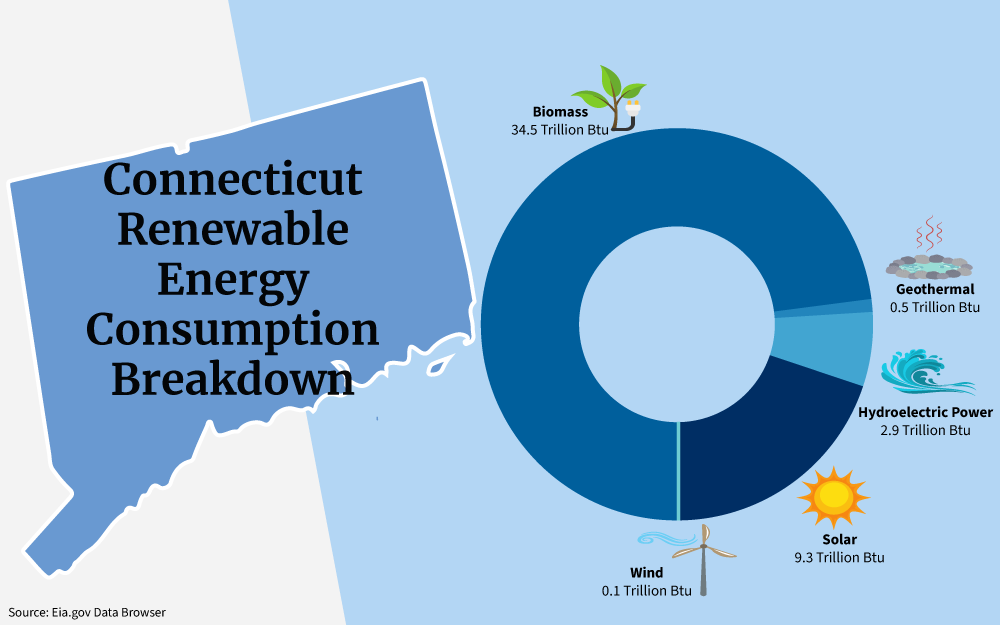
Yes, the upfront cost can be overwhelming, but not always, especially not when you need just a small system and carefully select the installer.
And by installing a home solar energy system, you can increase the amount of renewable energy consumption in the state, making it much greener.
Connecticut solar incentives like the solar tax credit can go a really long way to ensure that the cost is significantly reduced using open enrollment for rebates and other programs to promote green energy.
Frequently Asked Questions About Connecticut Solar Incentives
Can You Apply for the Solar Tax Credit if You Have a Solar Lease?
There is one important rule when it comes to applying for the federal solar tax credit, and that is you should be the legal owner of the solar panels. That is not the case when you have taken up a solar lease because the panels will belong to the solar company, thus a solar lease or PPA automatically shuts you out of the incentive.
Can You Claim the Solar Tax Credit Twice in CT?
If you already claimed the solar tax credit on the panels that you installed, you cannot apply for a second time. The only exception to this is if you have another home, which means that you can make a whole new claim on a whole new installation.
What Happens When Your Tax Bill Is Lower Than the Tax Credit?
Since there is absolutely no limit on how much money you can claim on your ITC, there are cases where the credits will be more than the taxes that you owe. In such unique situations, the balance can easily roll over to the next year, but there is one rule: it can only carry forward for five years, no more than that.
References
1Best Solar Companies in Connecticut (2023 Guide). (2023, August 14). This Old House. Retrieved August 27, 2023, from <https://www.thisoldhouse.com/solar-alternative-energy/reviews/solar-companies-connecticut>
2David, L. (2023, August 10). Connecticut Solar Tax Credits, Incentives and Rebates (2023). MarketWatch. Retrieved August 27, 2023, from <https://www.marketwatch.com/guides/home-improvement/connecticut-solar-incentives/>
3Simms, D. (2023, August 16). Connecticut Solar Incentives (2023 Tax Credits & Rebates). Today’s Homeowner. Retrieved August 27, 2023, from <https://todayshomeowner.com/solar/guides/connecticut-solar-incentives/>
4Simms, D., Wakefield, F., & Neumeister, K. (2023, August 7). How Much Do Solar Panels Cost in Connecticut? (2023 Savings Guide). EcoWatch. Retrieved August 27, 2023, from <https://www.ecowatch.com/solar/panel-cost/ct>
5Wakefield, F. (2023, August 7). 2023 Connecticut Solar Incentives Guide (Tax Credits, Rebates & More). EcoWatch. Retrieved August 27, 2023, from <https://www.ecowatch.com/solar/incentives/ct>
6Senate Democratic Majority. (2022). Summary: The Inflation Reduction Act of 2022. Senate Democrats. Retrieved August 31, 2023, from <https://www.democrats.senate.gov/imo/media/doc/inflation_reduction_act_one_page_summary.pdf>
7Solar Energy Technologies Office. (2023). Solar Photovoltaic Cell Basics. Office Of Energy Efficiency & Renewable Energy. Retrieved August 31, 2023, from <https://www.energy.gov/eere/solar/solar-photovoltaic-cell-basics>
8South Carolina Department of Health and Environmental Control. (2018, April). Shining Some Light on Solar Panels. South Carolina Department of Health and Environmental Control. Retrieved August 31, 2023, from <https://scdhec.gov/sites/default/files/Library/OR-1695.pdf>
9US Department of Energy. (2023). Residential Renewable Energy. US Department of Energy. Retrieved August 31, 2023, from <https://www.energy.gov/energysaver/residential-renewable-energy>
10US Department of Energy. (2023). What Is a Power Purchase Agreement? Better Buildings. Retrieved August 31, 2023, from <https://betterbuildingssolutioncenter.energy.gov/financing-navigator/option/power-purchase-agreement>
11U.S. Internal Revenue Service. (2022, October 5). Form 5695. IRS. Retrieved August 31, 2023, from <https://www.irs.gov/pub/irs-pdf/f5695.pdf>
12U.S. Energy Information Administration. (2023, June). Table 5.6.A. Average Price of Electricity to Ultimate Customers by End-Use Sector. EIA. Retrieved September 10, 2023, from <https://www.eia.gov/electricity/monthly/epm_table_grapher.php?t=epmt_5_6_a>
13State of Connecticut. (2023). Solar Panel Purchases for Consumers. Connecticut State Department of Consumer Protection. Retrieved September 10, 2023, from <https://portal.ct.gov/DCP/Trade-Practices-Division/Solar-Panel-Purchases-for-Consumers>
14Solar Energy Industries Association. (2023). Connecticut Solar. SEIA. Retrieved September 10, 2023, from <https://www.seia.org/state-solar-policy/connecticut-solar>
15Internal Revenue Service. (2023). 2022 Instructions for Form 5695. IRS. Retrieved September 13, 2023, from <https://www.irs.gov/pub/irs-pdf/i5695.pdf>
16Internal Revenue Service. (2023). Form 1040 (2022). IRS. Retrieved September 13, 2023, from <https://www.irs.gov/pub/irs-pdf/f1040.pdf>
17Energize CT. (2023). Home Energy Solutions℠. Energize CT. Retrieved September 18, 2023, from <https://energizect.com/energy-evaluations/HES>
